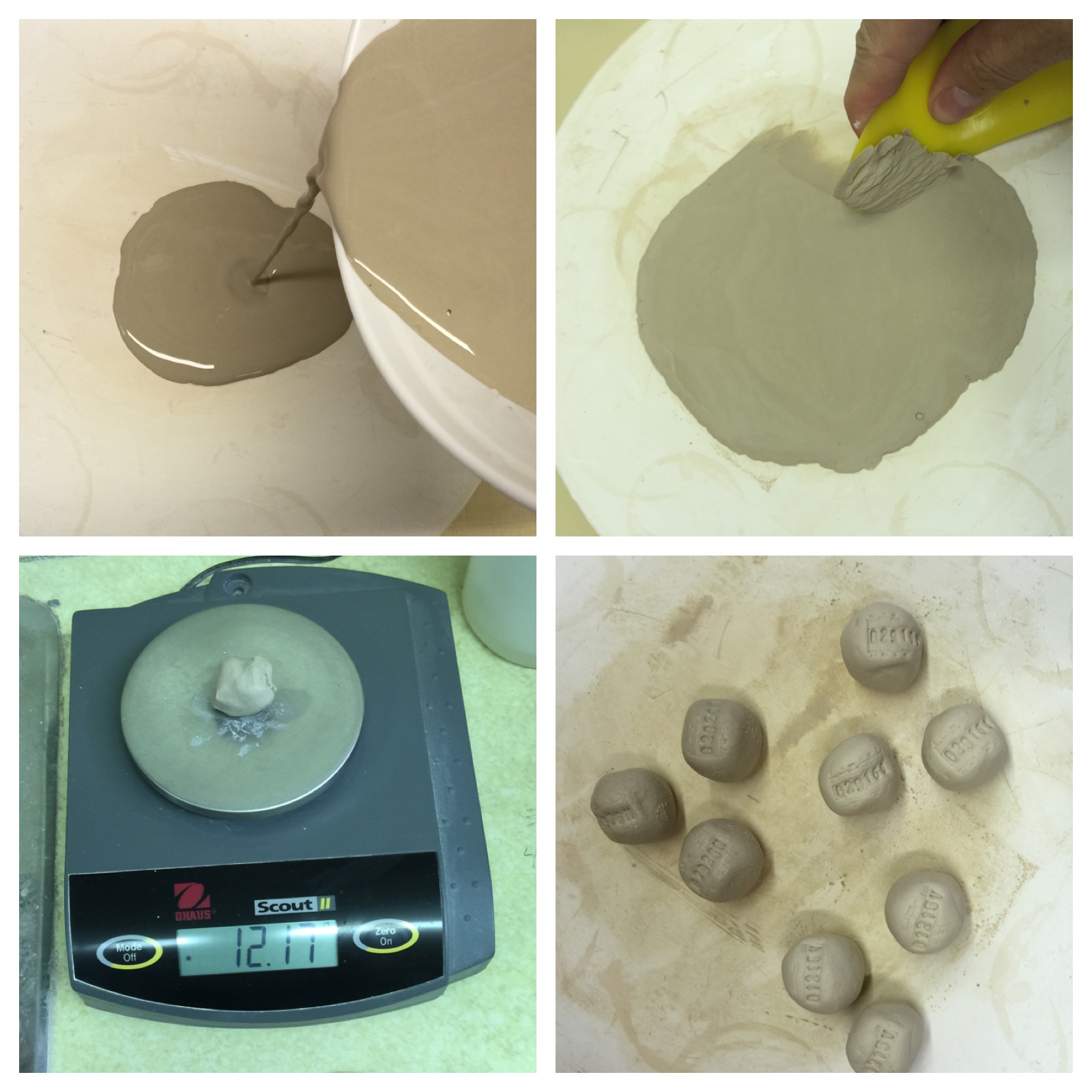Form a ceramic glaze into balls? Why would you want to do that?
The vast majority of glazes are plastic (but less than insight-live.com/glossary/11">clay bodies). They can be dewatered on a plaster surface and formed. Why do this? To make 9-10 gram balls and fire them on flat tiles (or inclined flow testers) to see their melting characteristics. It is surprising how much this can tell you about the glaze. To make the ball, mix the slurry well and pour a little on the plaster. It should dewater in less than 30 seconds. As soon as the water sheen is gone, scrape it up with a rubber rib, hand-knead it and flatten it back down to dry a little more if needed (leave it only for five or ten seconds and rework it. Repeat until it is stiff enough to form balls of about 12 grams. Stamp them with ID numbers and dry them.
Pages that reference this post in the Digitalfire Reference Library:
GBMF Glaze Melt Fluidity - Ball Test, A Low Cost Tester of Glaze Melt Fluidity

This post is one of thousands found in the Digitalfire Reference Database. Most are part of a timeline maintained by Tony Hansen. You can search that timeline on the home page of digitalfire.com.
